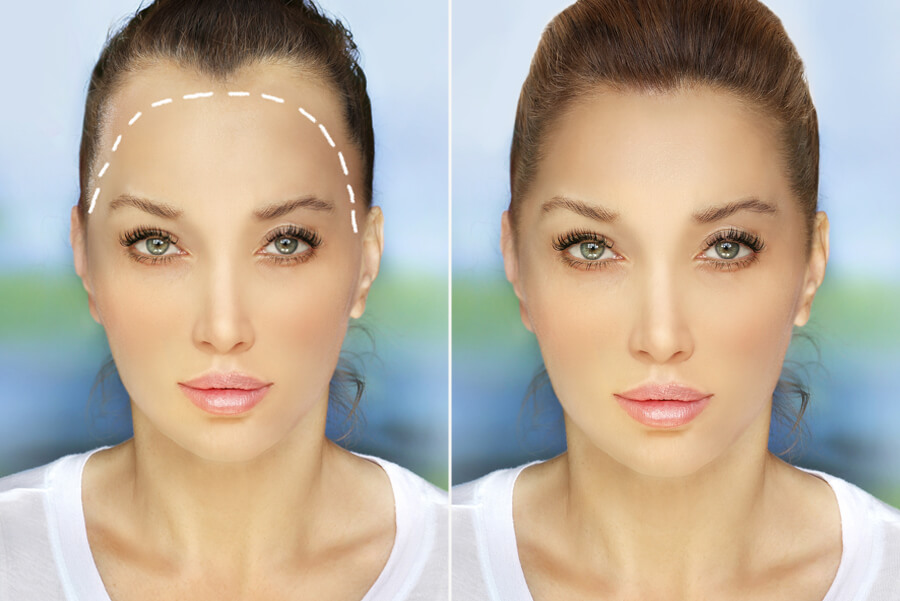Healing Follicles: Tips for Successful Hair Transplant Recovery
Posted on: March 27, 2024
Essential Aftercare Guidelines
Bespoke Plan
Every individual’s journey through hair transplant recovery is unique. This calls for a bespoke aftercare plan, tailored during the initial consultation, to support the healing process following treatment, focusing on the recipient area for an optimal final result. It outlines specific steps, including consultation at the initial stage and monitoring the healing process, to ensure the best possible final result.
Doctors provide a personalized guide, emphasizing the importance of following it closely. This plan becomes the roadmap for recovery, detailing everything from medication schedules to activity restrictions, procedure consultation, getting back on track, and shedding limitations.
Graft Care
The first few days following the hair transplant procedure are critical for new hair graft survival. Patients must resist the urge to touch or scratch the recipient area following the hair transplant procedure to protect the newly transplanted hairs. Such actions can dislodge the newly transplanted hair follicles, risking the success of the procedure following.
It’s vital to protect the scalp and hairs from any impact or excessive pressure, especially after a hair transplant procedure. Even a seemingly harmless act can jeopardize hair transplant graft stability during this delicate phase of the procedure, affecting the newly transplanted hairs.
Washing Protocol
Starting on day 5 post-surgery, washing instructions for hair transplant procedure become crucial for healing, graft survival, and maintaining healthy hairs. Incorrect washing can harm the recipient area of a hair transplant procedure, while proper technique supports optimal recovery.
Patients receive detailed guidance on how to gently cleanse their scalp without disturbing the grafts after a hair transplant procedure. This includes using recommended shampoos and avoiding direct water pressure on sensitive areas as part of the post-procedure care for a hair transplant.
Managing Side Effects Post-Transplant
Medication Use
After undergoing a hair transplant procedure, it’s crucial to apply prescribed medications or creams. These are designed to alleviate redness, swelling, and scabbiness in the transplanted area after a hair transplant procedure. The surgeon will provide specific instructions on how and when to use these medications after the hair transplant procedure.
Patients should follow these directions carefully after their hair transplant procedure to ensure optimal healing. Ignoring this step in the procedure can lead to discomfort and potentially impact the hair transplant results.
Monitoring Health
It’s equally important for patients to report any signs of infection or unusual discomfort to their surgeon immediately after a hair transplant procedure. Signs such as excessive redness, pus, or severe pain around the transplanted hairs or donor site after the procedure may indicate an issue that requires prompt attention.
By keeping in close contact with their healthcare provider after a hair transplant procedure, patients can address any concerns quickly, ensuring a smoother recovery process.
Understanding Shedding
Patients should know that hair shedding within the first two weeks is normal and part of the hair restoration surgery recovery process following a transplant procedure. This phenomenon occurs as the scalp adjusts and makes way for new hair growth from the grafts. It does not mean the transplant was unsuccessful.
Understanding this aspect of hair transplant recovery can help manage expectations and reduce anxiety about hair loss post-surgery.
Understanding the Recovery Timeline
Initial Days
The first 10-14 days after a hair transplant are crucial. During this period, the scalp undergoes significant healing. It’s vital to follow all post-operative care instructions to ensure optimal recovery. The recovery process begins immediately, with the scalp starting to heal from the surgical impacts on hair.
Patients might experience some discomfort, but it generally subsides within a few days. Proper care during these initial days lays the foundation for successful hair growth.
Hair Shedding
Around two weeks post-surgery, patients often notice the shedding of transplanted hair. This phase should not cause alarm as it is a normal part of the hair growth cycle. The hair roots remain intact beneath the scalp, preparing for new growth.
This temporary hair loss is followed by a dormant phase, lasting until the 3-4 month mark. At this point, patients start to see new hairs sprouting from the transplanted follicles.
Growth Phase
From 3-4 months onward, the exciting phase of hair regrowth begins. Patients will observe new hairs emerging, marking the start of the telogen phase of growth. This phase unfolds gradually, with hair density and texture improving over time.
Steps for Effective Wound Healing
Scalp Care
Keeping the scalp clean and dry is crucial, especially in the first few days after a hair transplant. This step prevents infections and promotes effective wound healing. Patients should gently wash their hair, following the surgeon’s instructions, to avoid disturbing the newly transplanted follicles.
It’s also important to avoid scratching or touching the area. This can introduce bacteria and cause inflammation, slowing down the healing process.
Sun Exposure
Minimizing exposure to sunlight is another key step. The scalp is particularly sensitive post-operation. Direct sunlight can not only cause discomfort but also lead to complications like wound infection or scarring.
Patients should wear a hat if they need to be outdoors during peak sun hours. However, it’s best to stay indoors as much as possible in the first few weeks.
Nutrition and Hydration
Adequate nutrition and hydration are essential for supporting the body’s natural healing processes. A balanced diet rich in vitamins and minerals helps repair damaged tissue and promote hair growth.
Staying hydrated helps flush out toxins from the body, further aiding in recovery. It’s recommended to drink plenty of water and eat foods high in antioxidants.
Navigating Return to Normal Activities
Rest Period
After focusing on effective wound healing, it’s crucial to plan for the return to normalcy. Allocate at least four to five days of rest before trying to resume work or daily routines. This period allows the body to start the recovery process, minimizing discomfort and redness.
During these initial days, patients might notice shedding in the transplanted areas. This is a normal part of the cycle and marks the beginning of the stage where new hair will eventually grow.
Physical Limitations
Limiting physical activity is essential, especially exercises that induce sweating. For the first two weeks, avoid any form of exercise that could increase blood flow excessively to the head. Such activities can disrupt the delicate grafts and impact healing.
Gradually reintroducing regular activities is key. However, always avoid actions that might directly impact the head or disrupt the grafts. Use caution when wearing hats or any headgear, ensuring they do not rub against or press too hard on the transplanted areas.
Gradual Return
As days progress, slowly get back into your routine. Remember, every person’s recovery timeline varies. Listen to your body and consult with your doctor before increasing your level of physical activity or returning fully to your type of routine.
Importance of Follow-Up Care
Appointment Attendance
Attending all scheduled follow-up appointments is crucial. These visits allow the doctor to monitor healing and ensure graft survival. They can spot any issues early, preventing complications.
Patients should never skip these appointments. They play a key role in the overall success of the hair transplant process.
Hair Care Advice
During follow-up visits, patients get advice on resuming hair care routines. This includes when it’s safe to use shampoos, conditioners, and styling tools again.
Doctors provide tailored recommendations based on individual recovery progress. They ensure patients do not jeopardize their results by returning to normal activities too soon.

Concerns Addressing
Follow-up visits offer a chance to voice concerns or ask questions about recovery. Patients can discuss anything they’re unsure about, from minor irritations to changes in sensation.
These discussions are vital for peace of mind and clarity during the recovery journey. They help patients feel supported and informed every step of the way.
Ensuring Successful Long-Term Results
Healthy Lifestyle
Adopting a healthy lifestyle is crucial. This means eating well and staying hydrated. A balanced diet fuels hair growth.
Proper hydration also plays a key role. It keeps the new hairs healthy.
Personalized Care
Following personalized aftercare instructions is essential. Your physician will provide these.
They cover hair care and styling. This protects the transplanted area. It ensures the integrity of each hair.
Long-Term Strategies
Being informed about long-term care strategies is beneficial. These enhance and preserve your results.
Your consultation might include this discussion. It’s part of your overall plan.
Tips for a Smooth Recovery Process
Living Space
Preparing your living space before undergoing restoration surgery is crucial. It ensures a comfortable and stress-free recovery period. Patients should arrange their homes to minimize the need to move around too much. This helps in reducing pain and accelerating healing.
They might consider placing essentials within easy reach. Comfortable sleeping arrangements are also key, as proper sleep promotes faster hair growth.
Support System
Having a support system is invaluable during the recovery process. Friends or family members can assist with tasks that the patient might struggle with initially. This includes help with washing hair using special shampoo recommended by the Bosley physician or adjusting sleeping positions to protect the new hairline.
Their presence can also offer emotional support, making the journey less daunting for the patient.
Open Communication
Keeping communication lines open with your medical team is essential. Patients often have many questions about pain management, hair growth rate, and general post-surgery care. A Bosley physician can provide reassurance and guidance throughout this journey.
Regular check-ups allow for monitoring of the recovery process and adjustment of care plans as necessary. They ensure that new hairs grow correctly and that any concerns are addressed promptly.
Summary
Navigating hair transplant recovery is no small feat, but with the right approach, you can ensure a smooth and successful healing journey. From adhering to essential aftercare guidelines to managing side effects and understanding the recovery timeline, every step plays a crucial role in achieving the desired outcomes. Remember, effective wound healing and timely follow-up care are your tickets to enjoying long-term results. By following these tips for a seamless recovery process, you’re setting yourself up for success.
Don’t let uncertainty cloud your path to regaining confidence through hair restoration. Take charge of your recovery by staying informed and proactive in your care. If you’ve got questions or need further guidance, reach out to a professional. They’re your best ally in this journey. Ready to take the next step? Contact a hair transplant specialist today and embark on the road to recovery with confidence.
Frequently Asked Questions
How long does it take to recover from a hair transplant?
Recovery time varies, but most patients can return to work within a week. Full recovery, seeing final results, may take 6 to 12 months.
What are common side effects after a hair transplant?
Common side effects include swelling, redness, and tenderness around the treated area. These typically subside within a few days.
Are there any specific aftercare instructions I should follow post-transplant?
Yes, your surgeon will provide detailed aftercare instructions such as keeping the scalp dry for a certain period, avoiding strenuous activities, and how to wash your hair properly to ensure optimal healing.
When can I resume normal activities after my hair transplant?
Most patients can resume normal activities within a week. However, avoid heavy lifting and vigorous exercise for at least 2 weeks.
How important is follow-up care after a hair transplant?
Follow-up care is crucial to monitor healing, address any concerns early on, and ensure the best possible outcome of your transplant.
Can I expect permanent results from a hair transplant?
Yes, transplanted hair generally continues to grow throughout your life. However, maintaining overall scalp health is important for long-term results.
What tips can help ensure a smooth recovery process?
Following all post-op instructions closely, keeping the scalp clean and protected from the sun, and staying hydrated are key for a smooth recovery.





